 by "ttyymmnn" (ttyymmnn)
by "ttyymmnn" (ttyymmnn)
Published 09/26/2017 at 12:35
 by "ttyymmnn" (ttyymmnn)
by "ttyymmnn" (ttyymmnn)
Published 09/26/2017 at 12:35
Tags: planelopnik history
STARS: 15
!!! UNKNOWN CONTENT TYPE !!!
Welcome to
This Date in Aviation History
, getting of you caught up on milestones, important historical events and people in aviation from September 23 through September 26.
!!! UNKNOWN CONTENT TYPE !!!
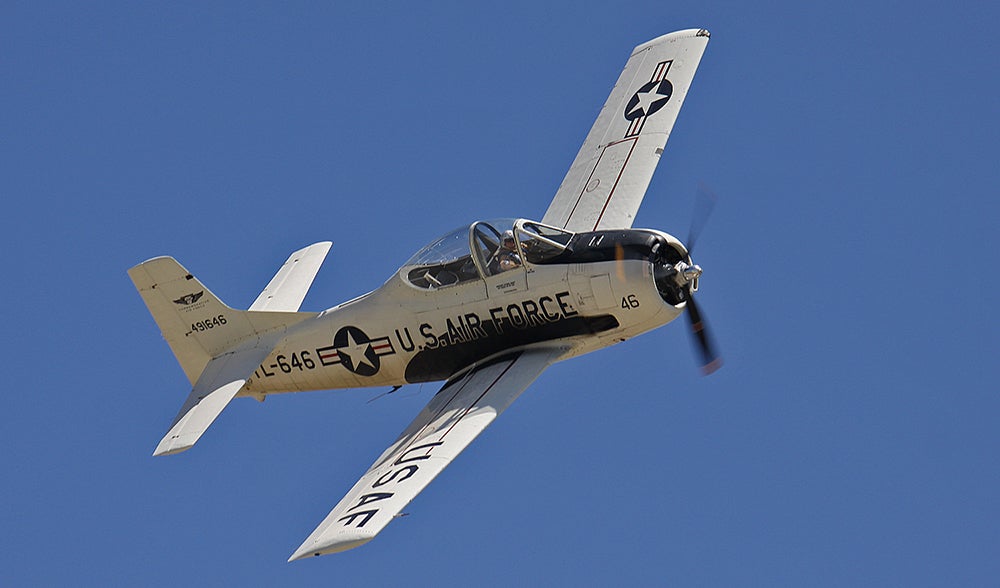
September 24, 1949 – The first flight of the North American T-28 Trojan . The career of any military pilot starts out with primary flight training carried out in a two-seat trainer, with one seat for the student and one for the instructor. The North American T-6 Texan , one of aviation history’s truly great airplanes, began its storied history as a trainer for the US military before WWII, and became the primary trainer for no less than 61 nations and ultimately served for 60 years. But even a great plane like the Texan would eventually need to be replaced one day. When that time came, though, the US military didn’t look for just a trainer. They hoped to adopt an aircraft that would also work well in the close air support (CAS) and ground attack roles. Based on the success of the T-6, the US Navy and Air Force once again turned to North American Aviation , and the aircraft they came up with proved to be every bit as effective as the one it was meant to replace. Like the T-6, the Trojan was a simple, rugged, straight-wing aircraft, and it was powered by a Wright R-1820 Cyclone nine-cylinder supercharged radial engine, the same one that powered many of the great warplanes of WWII such as the Boeing B-17 Flying Fortress , the Curtiss SB2C Helldiver , and a host of other military aircraft and helicopters. The engine provided a top speed of 343 mph and a climb of 4,000 feet per minute, and the pilots were housed under a frameless canopy that provided excellent visibility for both instructor and student. The T-28A entered service with the US Air Force, and was quickly adopted by the US Navy and US Marine Corps in two variants: the T-28B, which was similar to the Air Force version but with a more powerful engine, and the T-28C, which was designed for carrier operations with a smaller propeller and added arrester hook.
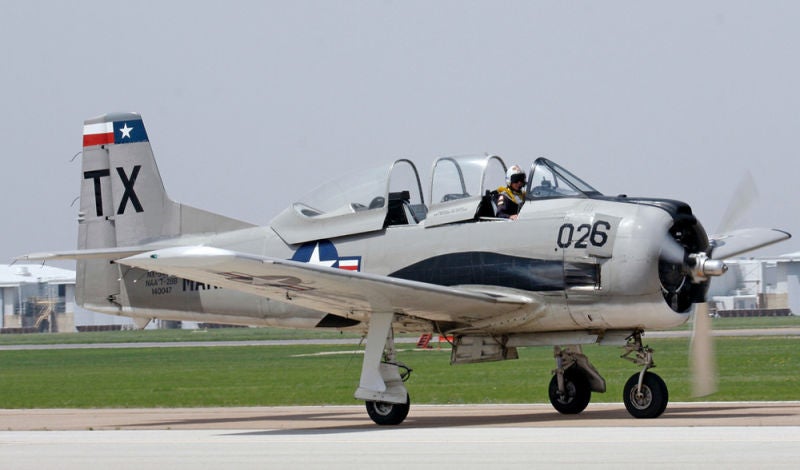
While the Air Force phased the Trojan out of service by the 1960s, it continued to serve the Navy and Marines well into the 1980s before being replaced by the Beechcraft T-34 Mentor , which was powered by a turboprop engine. Along with its service as a trainer, the Trojan proved to be an effective combat platform. During the Vietnam War, both the US Air Force and the South Vietnamese Air Force flew an armed version of the Trojan known as the T-28D Nomad for the counterinsurgency (COIN) role, as well as reconnaissance, search and rescue, and forward air control. For dedicated ground attack missions, the AT-28D provided a sturdy, flexible platform with six underwing hardpoints that could carry bombs, rockets or napalm for ground attack missions and was also fitted with an ejection seat. Trojans also served as an armed escort for attacks by Douglas A-26 Invaders or attack helicopters. And, like its predecessor, the Trojan was widely exported, serving a total of twenty-eight international customers, with nearly 2,000 produced from 1950-1957. The last T-28 was retired by the US Navy in 1984, but the aircraft served for another ten years with the Philippine Air Force, and it remains a popular performer on the air show circuit. (Photos by the author)
!!! UNKNOWN CONTENT TYPE !!!
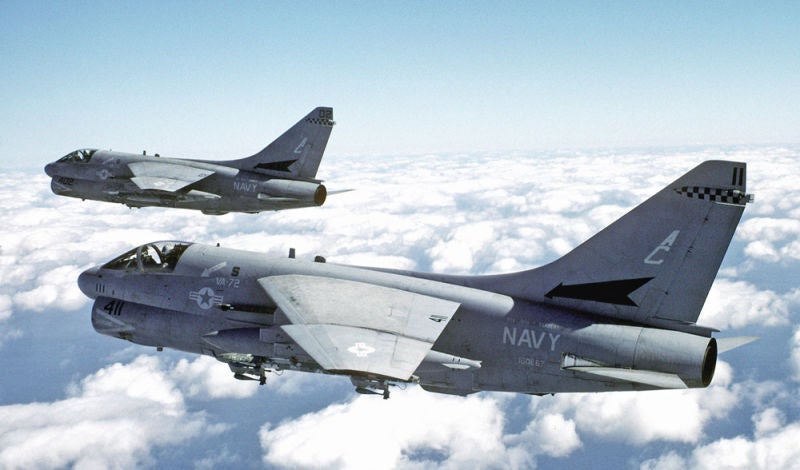
September 26, 1965 – The first flight of the LTV A-7 Corsair II. Throughout the history of military aviation, there have been a handful of aircraft that were named after successful predecessors, such as the Fairchild Republic A-10 Thunderbolt II and the McDonnell Douglas F-4 Phantom II . And while the jury is still out on the Lockheed Martin F-35 Lightning II , the others more than lived up to the well-earned reputation of their namesakes. So, when Ling-Temco-Vought (LTV) needed a nickname for their new hard-hitting ground attack aircraft, they found inspiration in the rugged and deadly Vought F4U Corsair of WWII and Korea, one of the preeminent fighters of the piston era. The US Navy began a search in 1962 for a new attack aircraft to replace the venerable Douglas A-4 Skyhawk , and they hoped to improve both the range and payload provided by the diminutive A-4. The Navy also requited that the new attack aircraft show improvements in target accuracy in order to reduce the costs associated with bombs that missed their mark. By 1963, the Navy finalized their requirements and announced the VAL (heavier-than-air, attack, light) competition and, to save money, the Navy stipulated that the aircraft be based on an existing design. Vought turned to their F-8 Crusader , a supersonic air superiority fighter that entered service with the Navy in 1957. But the Crusader was built for speed, with a long narrow fuselage and afterburning turbojet engine. Ground attack missions call for subsonic speeds closer to the ground, so Vought shortened and broadened the fuselage and removed the variable incidence wing that helped lower the Crusader’s landing speeds. They also increased the wingspan and replaced the Crusader’s afterburning turbojet with an Allison TF41 turbofan that had no afterburner, since there would be no need for the A-7 to fly at supersonic speeds. Vought fitted the A-7 with an AN/APQ-116 radar that offered better targeting than the McDonnell Douglas F-4 Phantom II , and also installed a head-up display (HUD), the first for a US fighter. The Navy selected the A-7 as the winner of the VAL competition in 1964, and it received the nickname Corsair II a year later and. Within three years, Navy A-7s were in action over Vietnam.
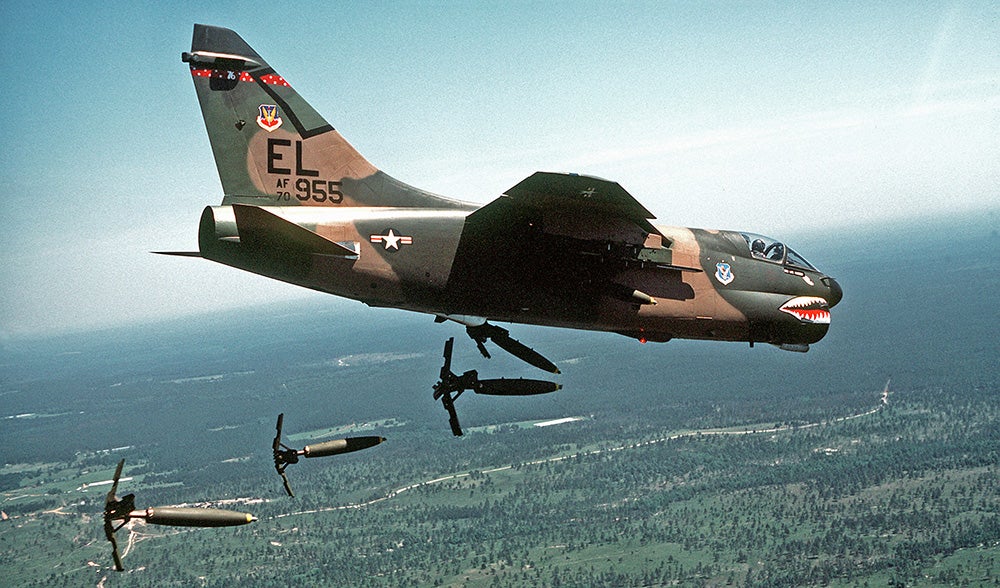
Though originally a Navy design, the Corsair II was also pressed into service with the US Air Force when they found they also needed a robust subsonic ground attack aircraft. Reluctant at first to take the Navy airplane, the Air Force relented under pressure from Secretary of Defense
Robert McNamara
, with the stipulation that their version would have a still more powerful engine and an
M61A1
rotary cannon rather than the two single-barreled 20mm cannons on the Navy version. This aircraft was designated the A-7D, and was later adopted by the Navy as the A-7E. By the end of the Vietnam War, the Air Force began passing the Corsair II over to the Air National Guard (ANG) in favor of the F-4 Phantom II, but the Navy continued flying theirs, and they saw action over
Grenada
, Libya, and even limited use in the
First Gulf War
. The ANG finally retired their Corsair IIs in 1993, but the Greek Hellenic Air Force flew the A-7 until 2014.
(US Navy photo; US Air Force photo)
!!! UNKNOWN CONTENT TYPE !!!
!!! UNKNOWN CONTENT TYPE !!!
!!! UNKNOWN CONTENT TYPE !!!
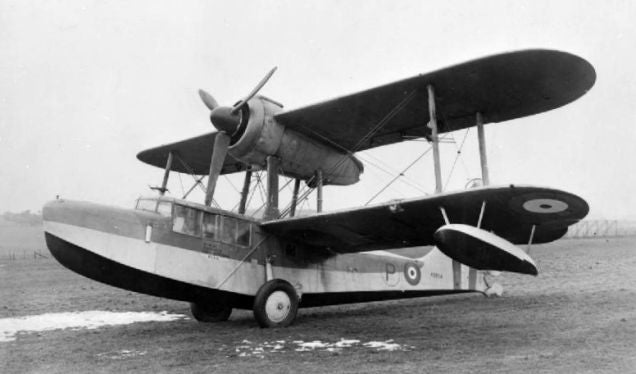
September 23, 1938 – The first flight of the Supermarine Sea Otter,
an amphibian aircraft developed for the Royal Navy and Royal Air Force before WWII and the last biplane to be flown by either service. The Sea Otter was a development of the earlier
Supermarine Walrus
, with the principal difference being the placement of a single
Bristol Mercury
radial engine in the center of the upper wing in a puller configuration rather than between the wings as a pusher. The Sea Otter entered service in 1942 and carried out air-sea rescue missions and maritime reconnaissance, while postwar aircraft flew small numbers of passengers and cargo. Just under 300 were built before the end of the war halted production.
(Imperial War Museum photo)
!!! UNKNOWN CONTENT TYPE !!!
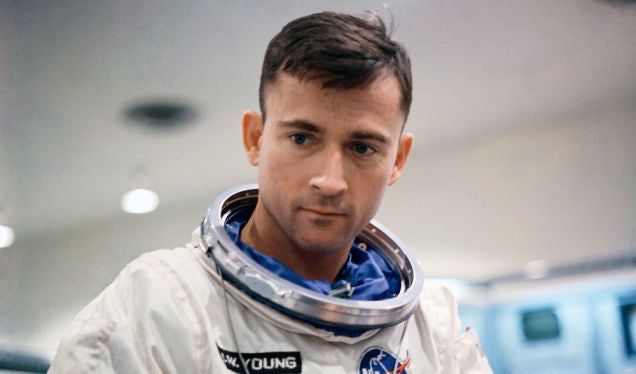
September 24, 1930 – The birth of John Young, an American aeronautical engineer, US Naval Aviator, test pilot, and astronaut. Young began flying with the US Navy as a helicopter pilot in 1954 before transferring to jets, and joiners NASA in 1962 as part of Astronaut Group 2. During his time with the space agency, Young made six space flights, including the first manned Project Gemini mission, became the first man to orbit the Moon alone during Apollo 10 , drove the Lunar Roving Vehicle on the Moon during Apollo 16 , and is one of only three people who have flown to the Moon twice. Young is also the only person to have piloted four different classes of spacecraft, including the first flight of the Space Shuttle program in 1981. Young’s retirement from NASA in 2004 marked the end of the longest career of any NASA astronaut. (NASA photo of Young in 1963 during Gemini 3)
!!! UNKNOWN CONTENT TYPE !!!
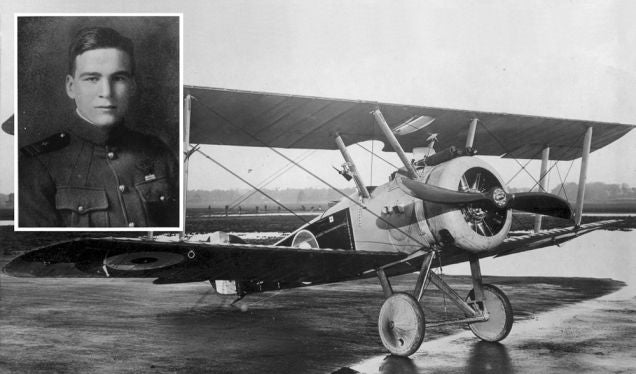
September 24, 1918 – US Navy Lt. David Ingalls becomes the first US Navy fighter ace. Ingalls enlisted in March 1917 as Naval Aviator No. 85 and was sent to Europe six months later attached to RAF No. 213 Squadron , where he flew a Sopwith Camel from a base in Dunkirk in northern France. With six credited victories by the end of the war, Ingalls was the first fighter ace in US Navy history and the Navy’s only ace of WWI. For his service, Ingalls received the US Navy Distinguished Service Medal , the British Distinguished Flying Cross and the French Legion of Honour . Following the war, Ingalls became a director of Pan Am World Airways and assisted Charles Lindbergh with charting eastern air routes for Pan Am. (Ingalls photo via US Navy; Sopwith Camel photo via UK Government)
!!! UNKNOWN CONTENT TYPE !!!
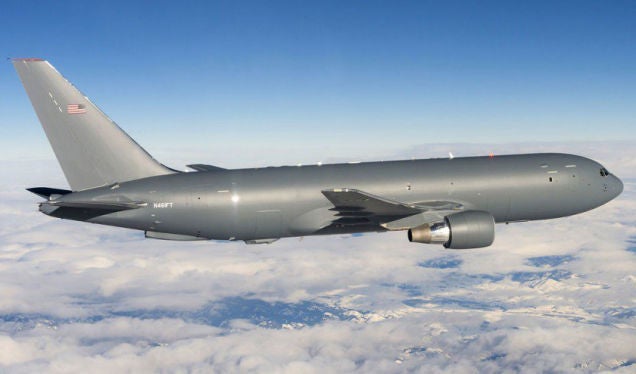
September 25, 2015 – The first flight of the Boeing KC-46 Pegasus, the newest aerial refueling and strategic airlifter slated to enter service with the US Air Force in 2018. In 2011, the Pegasus was announced as the winner of the Air Force KC-X competion over a Northrop Grumman/Airbus offering in a protracted and often acrimonious debate over which aircraft would replace 100 older Boeing KC-135 Stratotankers . The Pegasus is based on the Boeing 767 widebody airliner and will have seating for up to 114 people or 65,000 pounds of cargo and will be capable of transferring over 207,000 pounds of fuel. (US Air Force photo)
!!! UNKNOWN CONTENT TYPE !!!
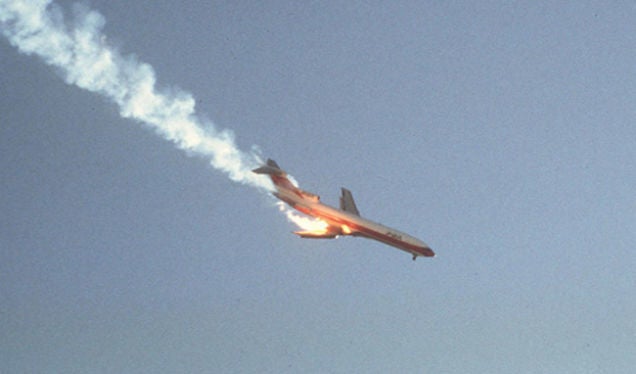
September 25, 1978 – The midair collision of Pacific Southwest Airlines Flight 182 and a private plane over San Diego. On the day of the collision, PSA Fight 182, a Boeing 727 (N533PS), was approaching San Diego’s Lindbergh Field (now San Diego International Airport) when it collided with a Cessna 172 Skyhawk , causing the crash of both aircraft. The crew of the 727 had been alerted to the presence of the Cessna, but had lost sight of it and failed to notice when it made an unauthorized change of course. The pilot of the Cessna was under a hood practicing instrument landing system (ILS) approaches, but his instructor had no limitations on his vision and failed to see the 727. Air traffic control detected a conflict alert but did not warn the aircraft since they believed that they could see each other. The planes came down in a residential area, killing 142 passengers and 9 people on the ground. Following a similar mid-air collision in 1982 , the FAA mandated that Traffic Collision Avoidance Systems (TCAS) be installed in all commercial airliners flying in US airspace. (Photo by Hans Wendt)
!!! UNKNOWN CONTENT TYPE !!!

September 25, 1945 – The first flight of the de Havilland Dove, a short-haul passenger plane that was designed as a feeder to larger airports and one of the most successful designs to come out of the Brabazon Committee in their search for a domestically produced British airliner following WWII. The Dove was a monoplane successor to the pre-WWII de Havilland Dragon Rapide biplane and had accommodations for eight passengers. De Havilland built the Dove from 1946 to 1967, ultimately producing 542 aircraft, and it entered service in 1946, with the first aircraft purchased by Argentina. The Dove was widely exported, serving airlines around the world, and remains in limited service today. (Photo by Andre Wadman via Wikimedia Commons )
!!! UNKNOWN CONTENT TYPE !!!
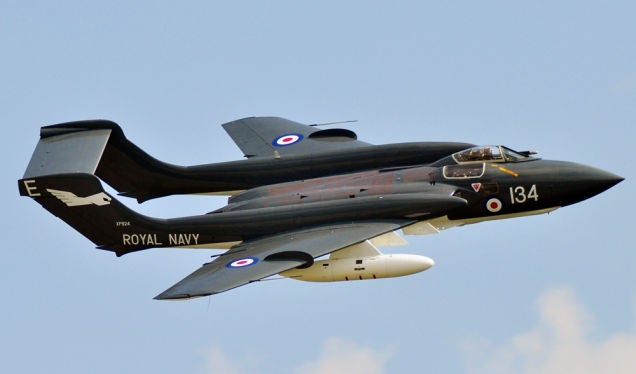
September 26, 1951 – The first flight of the de Havilland Sea Vixen, a twin boom, twin-engine, all-weather, carrier-based fighter developed for the British Royal Navy Fleet Air Arm . Development of the Sea Vixen began in 1946 as the DH.110, and its twin boom design was borrowed from the de Havilland Venom , though the Sea Vixen was of all-metal construction. The Sea Vixen was powered by two Rolls-Royce Avon axial flow engines and was the first British fighter capable of supersonic speeds. The Sea Vixen was armed with a mixture of missiles, bombs, or rockets, but carried no internal gun. It entered service in 1959 and, while the Sea Vixen never saw any actual combat, it was dispatched to flashpoints around the world throughout the 1960s wherever a show of military power was required. (Photo by Lmgaylard via Wikimedia Commons )
!!! UNKNOWN CONTENT TYPE !!!
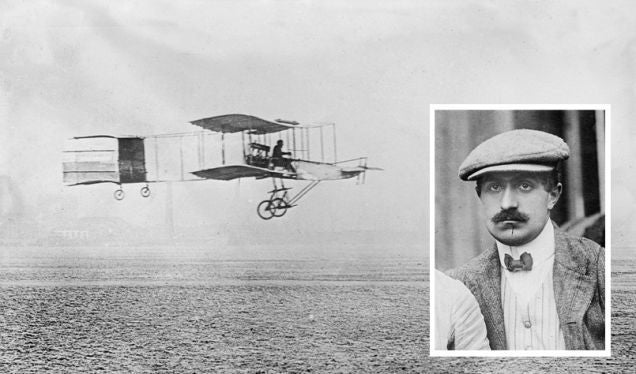
September 26, 1912 – The death of Charles Voisin, an early French pioneer of aviation who founded an aircraft manufacturing company with his brother Gabriel called Appareils d’Aviation Les Frères Voisin in 1906. The Voisins built airplanes to order for wealthy customers and used these aircraft to further their understanding of controlled flight. Their 1907 biplane, flown by Henri Farman , made the first heavier-than-air flight in Europe of more than one minute, and that aircraft, known as the Voisin-Farman 1 , formed the basis of their fledgling company. Voisin died from injuries sustained in an automobile accident on September 25, 1912, but the company continued under his brother’s leadership, and produced aircraft for the French during WWI. (Photos via US Library of Congress)
!!! UNKNOWN CONTENT TYPE !!!
!!! UNKNOWN CONTENT TYPE !!!
!!! UNKNOWN CONTENT TYPE !!!
!!! UNKNOWN CONTENT TYPE !!!
!!! UNKNOWN CONTENT TYPE !!!
!!! UNKNOWN CONTENT TYPE !!!
!!! UNKNOWN CONTENT TYPE !!!
If you enjoy these Aviation History posts, please let me know in the comments. And if you missed any of the past articles, you can find them all at Planelopnik History . You can also find more stories about aviation and aviators at Wingspan and Planes You’ve (Probably) Never Heard Of .
!!! UNKNOWN CONTENT TYPE !!!
 "WilliamsSW" (williamssw)
"WilliamsSW" (williamssw)
09/26/2017 at 13:07, STARS: 1
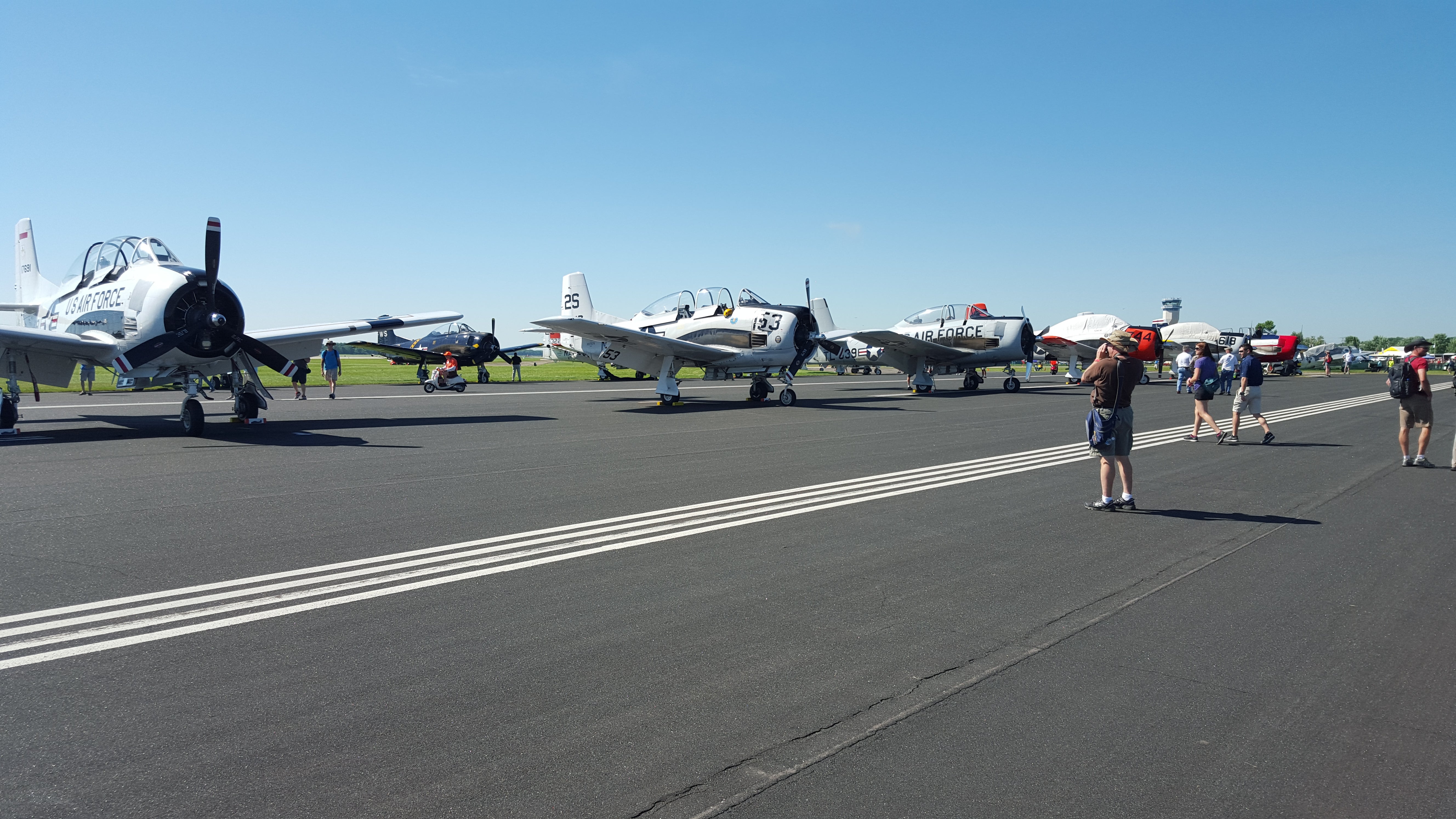
The T-28 (and Texan) are staples at Oshkosh - I’m not sure how many were there. They spend a lot of time in the air that week, too— they’re not museum pieces. Neat airplanes.
And I love the Sea Vixen- it’s a very cool and gorgeous aircraft - with a great name!
 "X37.9XXS" (x379xxs)
"X37.9XXS" (x379xxs)
09/26/2017 at 13:09, STARS: 2
I was at Udorn in December of 1975 and about 20 AT-28s came in, with the fuselage roundels seen below
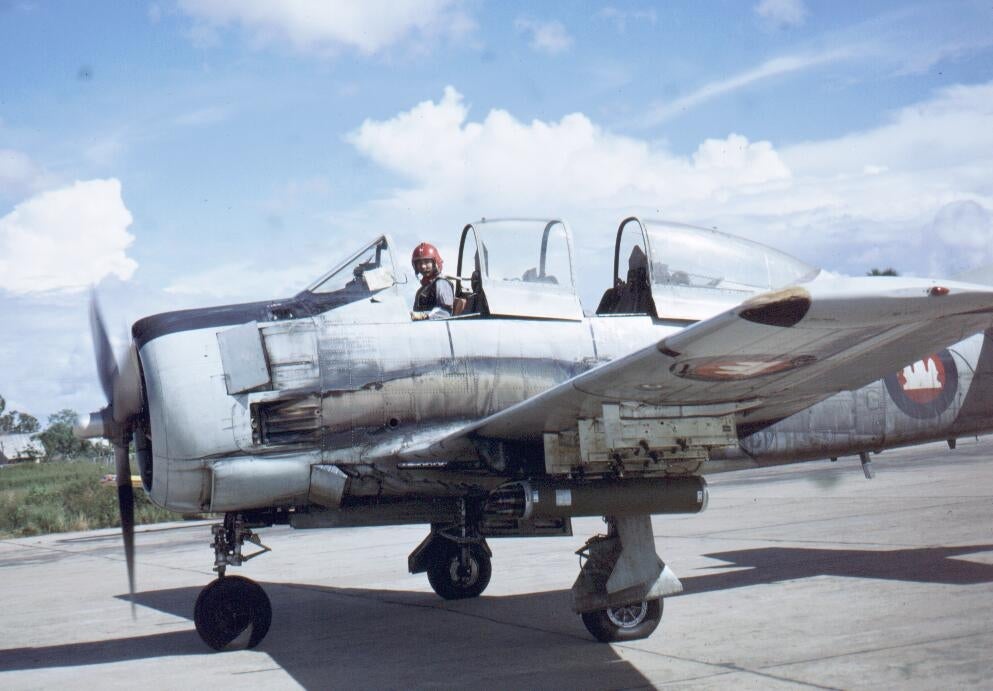
They flew out a few days later with the colors changed
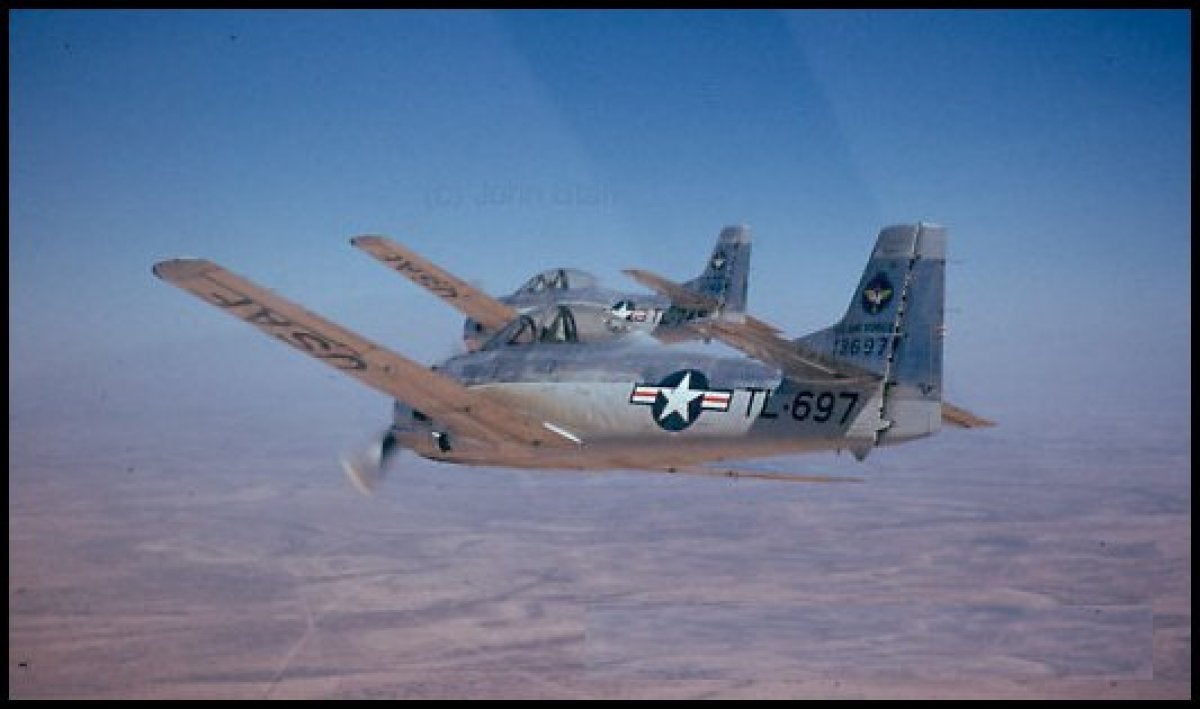
As an aside, in my compound, mine was the only bungalow with a phone. The CIA had installed some Laotian bigwig across the compound from my house, and I used to have to go over there at least twice a day with phone messages from the Embassy. Seriously cut into my drinking time
 "Viggen" (viggen37)
"Viggen" (viggen37)
09/26/2017 at 13:23, STARS: 3
The SLUF! Love that bird. Has such a great story serving as the cover story for the F-117 program as well.

Big fan of the two tone grey liveries that the ANG A-7s wore at the end of their career.
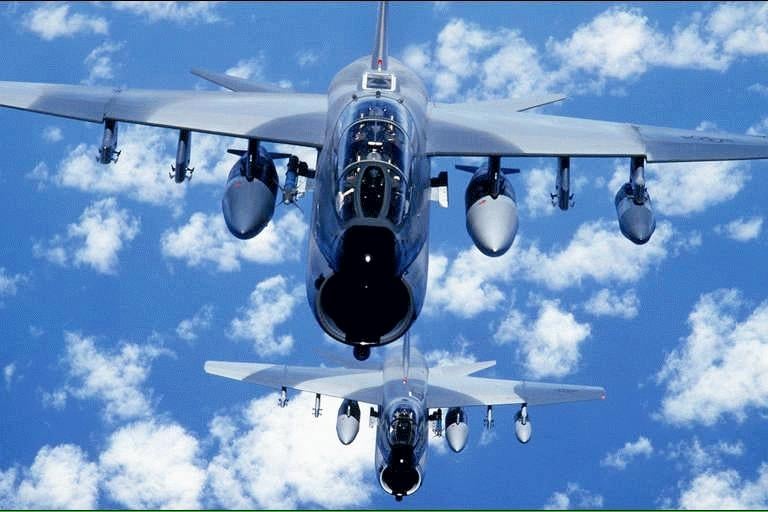
A-7s and A-6s would have been perfect for Afghanistan.

09/26/2017 at 13:31, STARS: 0
I’ve mentioned before that the old 146th TFS out of Greater Pitt used to fly A-7Ds, but it was a Testors model kit that brought the SLUF to my attention.
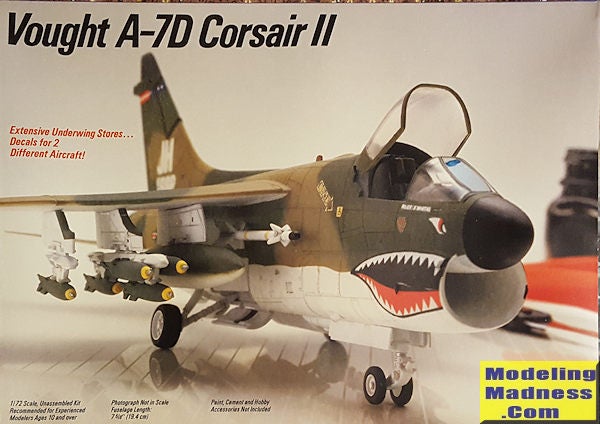
The first painting option, as seen on the box, is a Vietnam-era bird flying out of Thailand. The other was a modern (at the time) A-7D in the (then) current gray-green scheme flying for the 146th.

Building that, then getting to see one at the ‘91 Westmorland County air-show? My year was made.

Right before they retired the Corsairs they went to a gray/gray scheme.
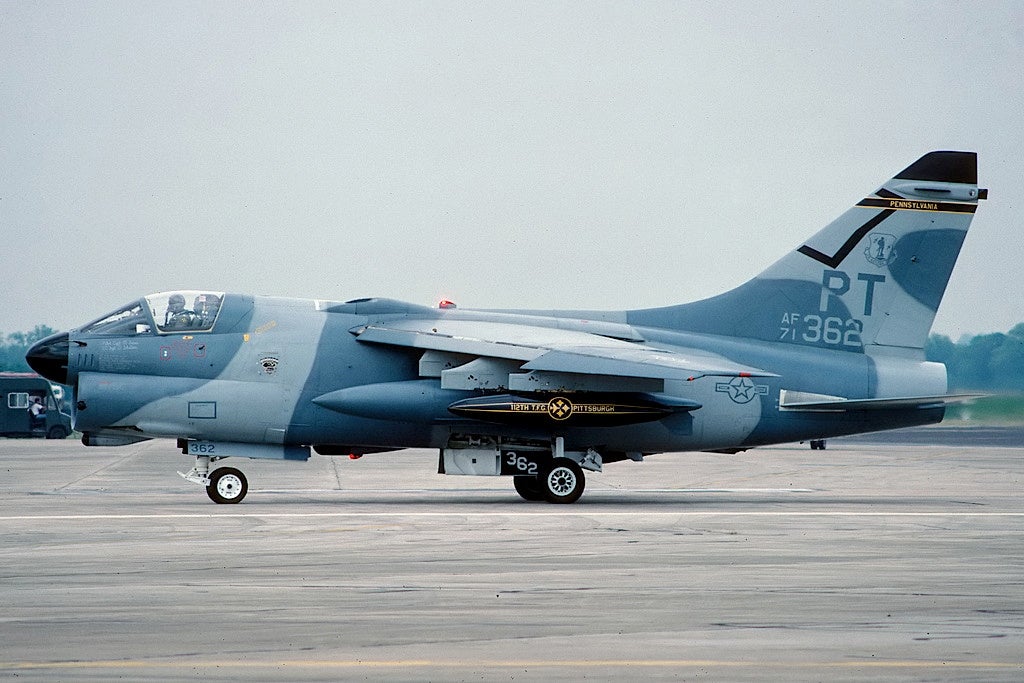
And yes, everything that flies from Pittsburgh has to have a Steelers logo.
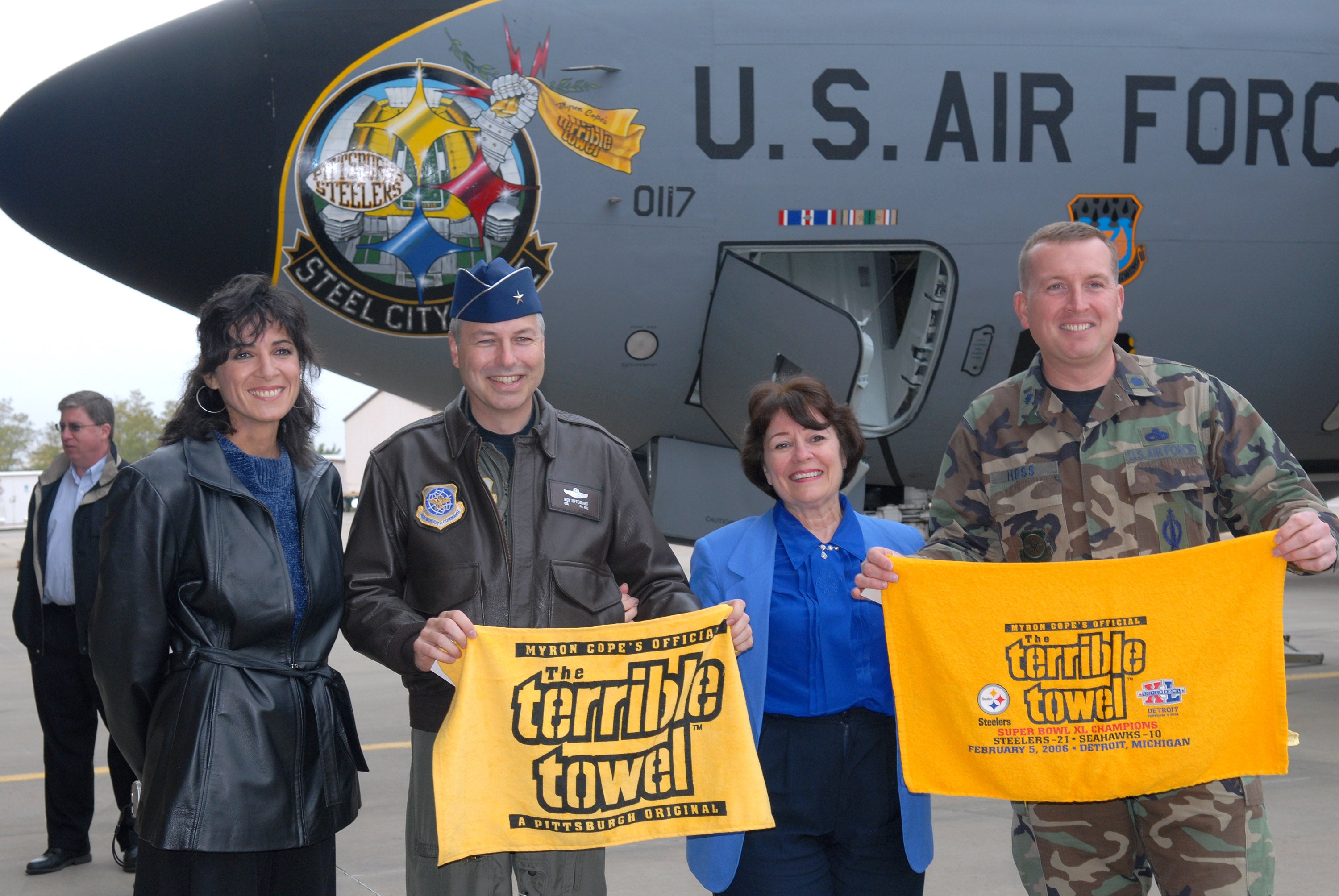
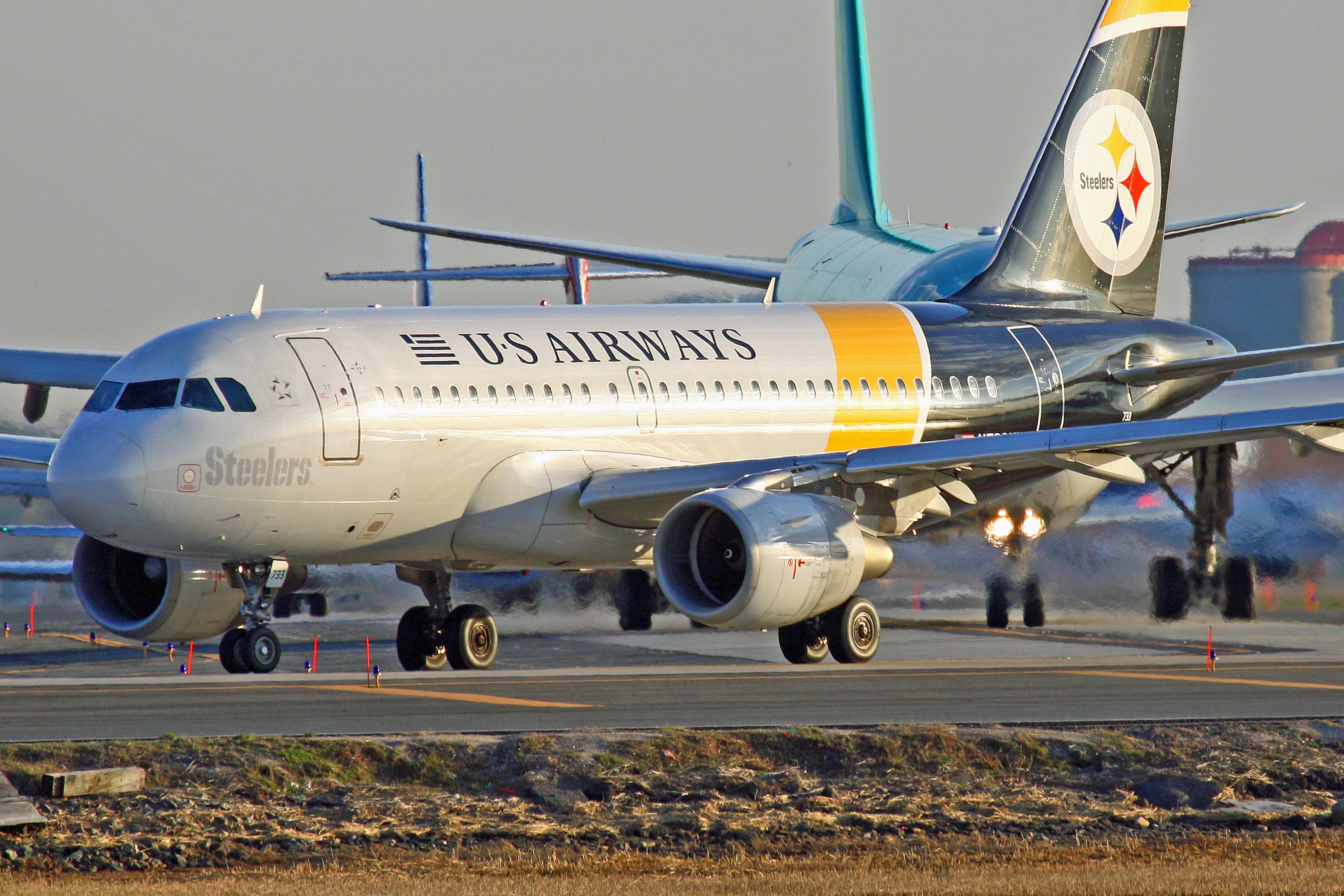
It’s the law.
 "ttyymmnn" (ttyymmnn)
"ttyymmnn" (ttyymmnn)
09/26/2017 at 14:15, STARS: 1
I actually remember seeing A-7s at PIT back in the day, taxiing alongside our airliner. It was super cool.
 "ttyymmnn" (ttyymmnn)
"ttyymmnn" (ttyymmnn)
09/26/2017 at 14:16, STARS: 0
They still would be. Bring ‘em out of retirement!
 "ttyymmnn" (ttyymmnn)
"ttyymmnn" (ttyymmnn)
09/26/2017 at 14:17, STARS: 0
Great stuff. Thanks.
 "ttyymmnn" (ttyymmnn)
"ttyymmnn" (ttyymmnn)
09/26/2017 at 14:18, STARS: 1
I’ve seen many T-28s at shows here in TX (hence my photo at the top). I love hearing those big radials pounding away.
The British had, by far, the best aircraft nicknames.

09/26/2017 at 14:21, STARS: 0
Looks like they’ve already started recycling them.
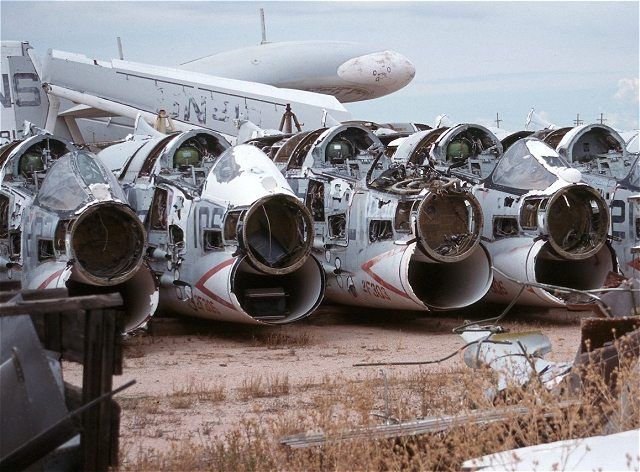
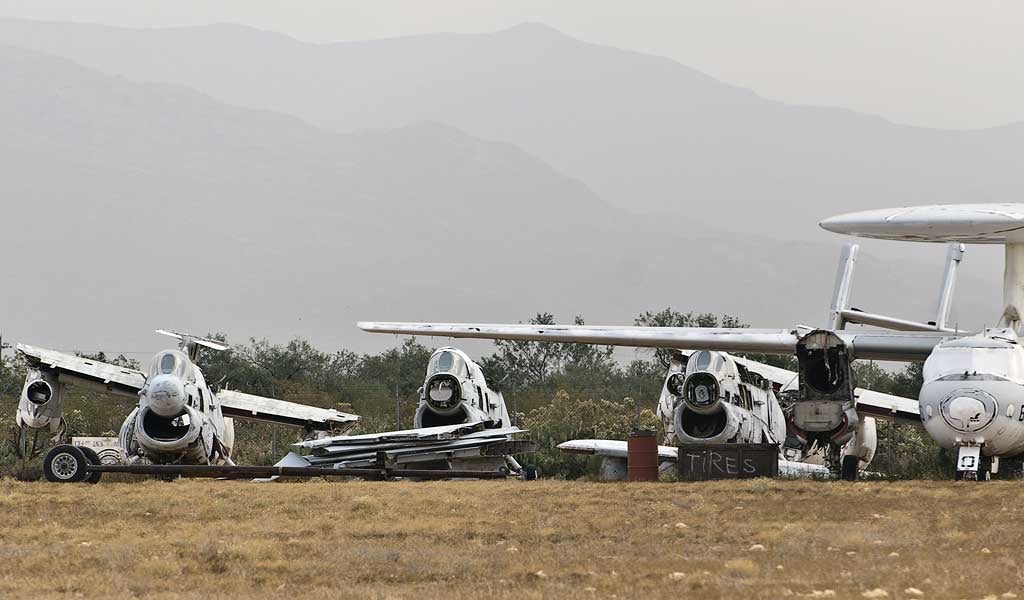
 "ttyymmnn" (ttyymmnn)
"ttyymmnn" (ttyymmnn)
09/26/2017 at 14:27, STARS: 0

 "WilliamsSW" (williamssw)
"WilliamsSW" (williamssw)
09/26/2017 at 15:27, STARS: 0
The hell with a screaming V8 or V12, I’ll take the sound of an R-1820 over any of them.
And yeah, the British know how to name airplanes. And besides, how many twin-boom, supersonic, carrier-capable aircraft are there, anyways?
 "ttyymmnn" (ttyymmnn)
"ttyymmnn" (ttyymmnn)
09/26/2017 at 15:55, STARS: 1
I’ve always said, jets are cool, turboprops are cool, but there’s nothing like the sound of those big ass radials, the more the better. I can’t even imagine what those huge B-17 or B-29 raids must have sounded like.
 "WilliamsSW" (williamssw)
"WilliamsSW" (williamssw)
09/26/2017 at 16:20, STARS: 0
Let’s see, 4 Wright Cyclones per airplane each delivering 1,200 HP at 2,500 RPM, times 1000 airplanes? 36,000 cylinders, 4.8 million horsepower would make a LOT of noise.
 "ttyymmnn" (ttyymmnn)
"ttyymmnn" (ttyymmnn)
09/26/2017 at 17:00, STARS: 0
I’m not sure the USAAC ever got quite that many bombers in the air at once. There was the famous Thousand Bomber Raid over Cologne, but that was the RAF and they only mustard about 800 a/c. A little Googling shows that the 8th Air Force put up just under 1,000 on a raid over Berlin. I’m not sure how many Superforts they flew against Japan at any one time. But yeah, that’s a hell of a lot of horses and must have made an ungodly racket.

09/26/2017 at 18:10, STARS: 0
I know. Back in ‘90-’91 I got this big glossy coffee table book about then-modern US airpower (all four branches), and dug it out to go show my nephews. They had little interest (They’re 6, and prefer YouTube vids, natch), but me and their dad were looking through it, and came to a sobering conclusion:
Almost ever plane in the book is retired, or on the way to being retired.
You’d think the kids would make us feel old, but that’s really got us.
 "Viggen" (viggen37)
"Viggen" (viggen37)
09/26/2017 at 18:11, STARS: 1
Actually had Witchcraft fly low over my house yesterday. Can confirm a single B-24 is still loud.
 "Viggen" (viggen37)
"Viggen" (viggen37)
09/26/2017 at 18:16, STARS: 1
I hate seeing these pictures. I know it’s just part of life’s process for an aircraft, but knowing that some day the Chinooks I cared for will be in a similar state just makes me sad.
 "ttyymmnn" (ttyymmnn)
"ttyymmnn" (ttyymmnn)
09/26/2017 at 18:22, STARS: 1
I’ve got a couple of airplane books that I got when I was a kid. It shows the F/A-18 as an artist’s concept, and the other one ends with the F-14. Their still great books, though, from the point of view of a historian.